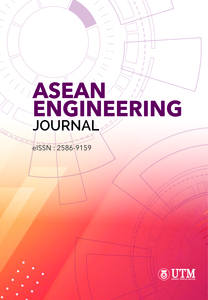ASSESSING CARBON SEQUESTRATION CAPACITY OF FOREST AND PROPOSING SOLUTIONS TO GREENING INDUSTRIES IN VIETNAM
DOI:
https://doi.org/10.11113/aej.v11.16870Keywords:
Carbon sequestration capacity, Carbon payment for forest environmental services (C-PFES), Cement industry, GHG emission, Thermal power plantAbstract
Aiming to reduce GHG emissions in order to limit and prevent climate change response in Vietnam, decree 99/2010/ND-CP about payment for forest environmental services (PFES) went into effect since Jan 2011. After years of implementation, the policy has brought positive impacts and mobilized remarkable financial resources for forest management, protection and development and also improve living standard of people whose lives depend on the forest. However, until now PFES has focused on target sectors of clean water and tourism; other potential sectors such as industrial companies, have not been applied. This research aims to identify opportunities and challenges of Carbon PFES from industrial companies that have been causing large GHGs emission. Quang Ninh and Thanh Hoa – the two largest provinces in Vietnam are selected to collect data and estimate GHG emissions from coal-fired thermal power plants and cement plants; and also to identify sequestration capacity of forest-based C services that are providing boundary in the two provinces. As the result, average emission factors for pulverized coal, circulating fluidized bed and rotary kiln technology were 1.05 tCO2/MWh, 1.11 tCO2/MWh and 0.85 tCO2/ton of clinker, respectively. In 2018, total CO2 emissions from thermal power and cement industry in Thanh Hoa and Quang Ninh were 11,395,545 tCO2, and 31,938,232 tCO2, respectively. Meanwhile, CO2 absorption capacity of all forest types in these two provinces were 4,302,474 tCO2 and 3,191,060 tCO2, respectively. It means about 38% of CO2 emitted in the year from these industries can be absorbed by the forests in Thanh Hoa and about only 10% of that can be absorbed by the forests in Quang Ninh. It is also found that more than 17% of CO2 yearly emitted from both industries can be absorbed by the forests in both provinces. This research proposes scope of Carbon-PFES for the industrial sectors in Vietnam that meet GHG emission reduction targets.
















